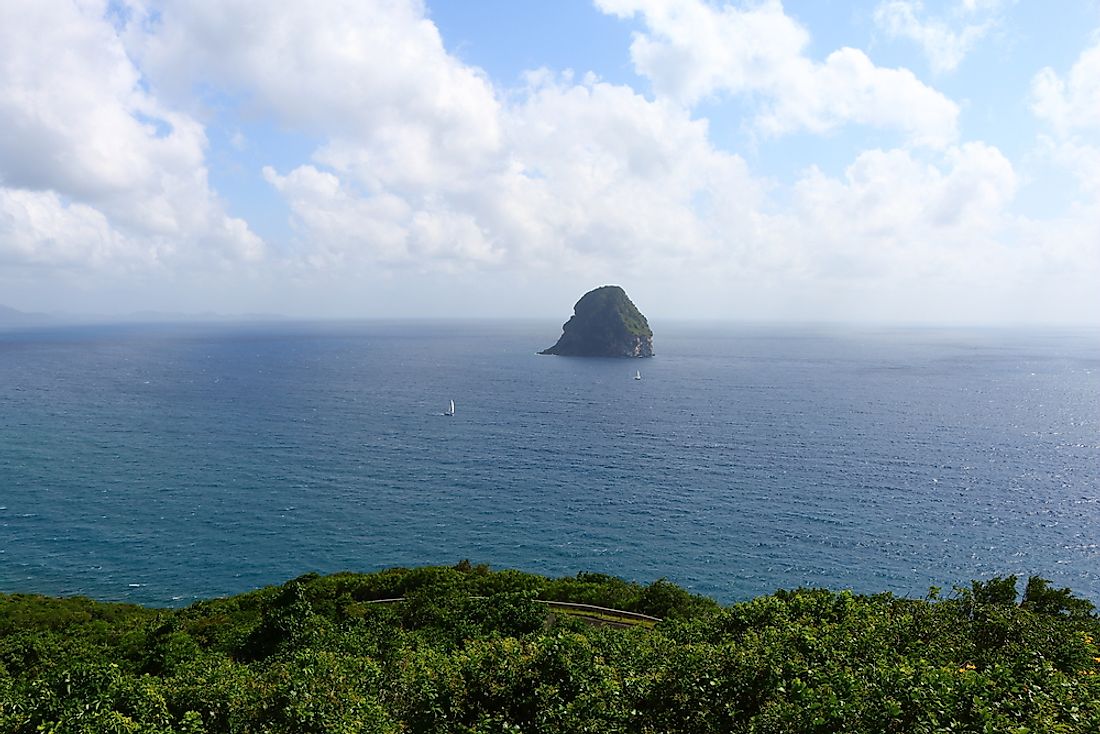What is Unique About Martinique's Diamond Rock?

Diamond Rock is an uninhabited island located off the Caribbean island of Martinique. The island is about 574 feet high and is located 9.1 miles from Pointe Diamant.
Martinique's Diamond Rock
The rock is a volcanic neck and is drier and sunnier than the mainland. At certain hours of the day, the sides of the island cast reflections which gives rise to images that resemble a precious stone, hence the name, Diamond Rock. Today the rock is uninhabited and is covered in cacti and undergrowth. The rock is believed to be a sanctuary for an extinct species, the courass grass snake, which was last seen on the island in 1962. Diamond Rock is unique for having been used as a fortress in the Napoleonic wars.
HMS Diamond Rock
Diamond Rock is strategically located near the shores of Martinique, a French colony. During the Napoleonic wars, diamond rock became strategically important. Occupancy of the rock allowed for interdiction of navigation between St. Lucia and Martinique.
Sir Samuel Hood was assigned to block the bays at Saint Pierre and Fort Royal. He sailed to Diamond Rock aboard Centaur with captain Murray Maxwell in September 1803. On December 1, lookouts from the Centaur got sight of a schooner with a sloop six miles away from Saint Pierre. Sarah, an advice boat, was sent after the sloop while Centaur was sent after the schooner. The schooner, Ma Sophie, was captured with its 45 men, and taken into service as tender. Lieutenant William Donnett, Ma Sophie’s captain was tasked to watch out for enemy vessels between Martinique and Diamond Rock.
The British then erected cannons on top of the rock and quickly built fortifications and located a small garrison on the island. They then supplied water and food to the island for the garrison of 120 men and two lieutenants. Hood, the Commodore, classified Diamond Rock as a “stone frigate” and named it HMS Diamond Rock. The Admiralty in London confirmed this designation, slightly altering its name to “sloop Diamond Rock”.
Caves at the base of the island served as sleeping quarters for the men while the officers slept in tents. Ropes and pulleys were used to raise supplies to the top of the rock. Guinea hens, chicken, and goats augmented their food supply. A hospital was also established in a cave at the base of the rock where men with fevers and injuries were treated.
In the time that followed, the French made various attempts to captures the island but they were driven off by the British. Eventually, Napoleon sent a fleet of 16 under Captain Cosmao-Kerjulien, which entirely blockaded Diamond Rock between 16th and 29th May 1805. However, the British did not surrender until 3 June 1805 when they were almost out of food, water, and ammunition. 107 British men were taken as prisoners by the French but were later repatriated to Barbados on June 6th.
Today all the Royal Navy ships passing the Rock are required to accord it appropriate honors because Britain still views the Rock as being part of the Royal Navy.











